Thanksgiving is a time for gratitude and celebration with loved ones. It’s a holiday meant for reflecting on the bounty of great things that have happened throughout the year, and a time to gather with friends and family for relaxed companionship and delicious meals.
Thanksgiving in Canada happens on the second Monday of every year. In 2019, it’s on October 14. Thanksgiving in Canada is an official holiday, and many Canadians commemorate the day by spending time with those they care about.
If you’ll be visiting Niagara Falls for Thanksgiving weekend, check out these Niagara Falls tours and things to do in Niagara Falls, Ontario.
Many Americans also take advantage of the long Thanksgiving weekend in the States and head up north for holiday. If you’ll be in Niagara Falls for the American Thanksgiving November 28, here are some things to check out, like the Niagara Falls Festival of Lights.
Things to Do in Niagara Falls Ontario for Canadian Thanksgiving, October 14
Autumn in Niagara Falls is one of the nicest times of year to be outside, with trees and leaves changing colours and adopting brilliant hues. Get in touch with nature by heading out with the family to the Niagara River Recreation Trail. Traverse more than 50km of pedestrian and bicyclist paths along the Canadian side of the Niagara River. Check out beautiful wildlife, flora and fauna along the way.
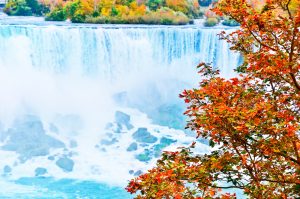
Canadian Thanksgiving weekend in Niagara Falls is one of the last weekends to head to the Floral Showhouse to see the Reiger Begonia Display. This colourful floral exhibit includes a mix of tropical foliage plants and begonias that create a stunningly gorgeous display.
Fall is also a great time to kick back with friends and family and check out winery Niagara Falls tours. Get a designated driver, grab your loved ones, and pop by wineries of the region to sample in-season fall flavours.
Thanksgiving weekend is your last chance to head to Safari Niagara before it closes for the season. Safari Niagara hosts the 7th annual Boo in the Zoo event October 12 to October 14 from 9:30 a.m. to 4 p.m. Kids can trick-or-treat around the zoo, with local businesses giving out goodies to visitors. There will be costume contests each day, a “Find the Golden Pumpkin” contest and a kids’ fun zone. Children ages 12 and younger receive free admission to the zoo on these days with a donation of a non-perishable food item.
Things to Do in Niagara Falls Ontario for American Thanksgiving, November 28
Looking for a different kind of American Thanksgiving? Head to Niagara Falls, Canada, for the long weekend. Niagara Falls is a great place to stay up north, with lots of fun events going on in late November.
The Niagara Falls Festival of Lights will be in full effect. Travel along the 8km route to see unique light displays, interactive art installations and more than 50 trees on Dufferin Islands wrapped with lights. There will also be light shows with music, like the Toronto Power Generating Station Light Show.
If you want to head somewhere special on the night of American Thanksgiving in Niagara Falls, the Greg Frewin Theatre is hosting DREAMER, The Supertramp Experience, a dinner-and-a-show event featuring talented Supertramp tribute band DREAMER. The buffet dinner is optional and can be added to any show ticket.
If you’ll be in Niagara Falls for American Thanksgiving, there’s no need to worry about what you’re going to eat. The best Niagara Falls restaurants will be open and ready to welcome you and your guests for Thanksgiving dinner.
You can check out Niagara Falls fireworks on Friday, November 29, at 9 p.m. Bundle up and head outside to see this magnificent one-of-a-kind show, or watch it from your Niagara Falls fallsview hotel room or restaurant.
If you’ll be in Niagara Falls a little earlier than the actual American Thanksgiving, head to the Holiday Handmade Market the weekend before, November 22 to 24 at Scotiabank Convention Centre. Get a head start on holiday shopping, where you can shop thousands of unique Canadian-made artisan products.
Get a Great Deal on Niagara Falls Hotels for Thanksgiving
Any time of year is fun to visit Niagara Falls or take a staycation right by the Niagara Falls waterfalls. The Thanksgiving weekends have a festive feel because they’re times of year when holidays like Christmas are just around the corner. Spending time with friends and family in Niagara Falls is always quality time.
If you’re interested in coming to Niagara Falls for a Thanksgiving weekend, book a stay with NiagaraFallsHotels.com. We’ve got great deals and packages for couples, groups and more.

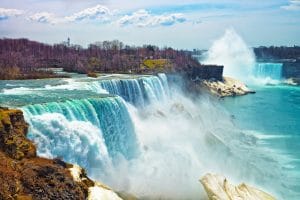
 Niagara Falls restaurants and welcoming hospitality.
Niagara Falls restaurants and welcoming hospitality. St. Catharines Food and History Tour
St. Catharines Food and History Tour

 Niagara Falls.
Niagara Falls.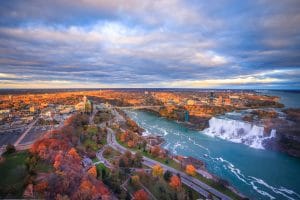 where many battles during the War of 1812 took place, and it’s still home to a historic military structure.
where many battles during the War of 1812 took place, and it’s still home to a historic military structure.
 Niagara Falls fall season. Foodies and wine lovers can delight in amazing food and wine made from authentic Niagara Falls region ingredients, in a picturesque setting unlike any other in the world.
Niagara Falls fall season. Foodies and wine lovers can delight in amazing food and wine made from authentic Niagara Falls region ingredients, in a picturesque setting unlike any other in the world. If you like fine food and fine wines, the Annual Harvest BBQ is for you. The event lasts around three hours, with a family-style dinner that encourages guests to linger, converse with loved ones and make new friends around the table. Seating is assigned, and groups can be accommodated to sit together. The event is meant to be a casual, friendly, enjoyable time for all who come.
If you like fine food and fine wines, the Annual Harvest BBQ is for you. The event lasts around three hours, with a family-style dinner that encourages guests to linger, converse with loved ones and make new friends around the table. Seating is assigned, and groups can be accommodated to sit together. The event is meant to be a casual, friendly, enjoyable time for all who come. hub for Niagara Falls, as well as a place locals and tourists love to visit.
hub for Niagara Falls, as well as a place locals and tourists love to visit. See Queen Street from a unique vantage point by taking a horse carriage ride around. You’ll spot carriages near the Prince of Wales on Queen Street. Tours range from 30 minutes to an hour and start at $95CDN. Find info
See Queen Street from a unique vantage point by taking a horse carriage ride around. You’ll spot carriages near the Prince of Wales on Queen Street. Tours range from 30 minutes to an hour and start at $95CDN. Find info 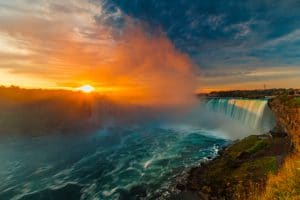 fun destinations in one night, put these things to do in Niagara Falls on your end-of-summer itinerary.
fun destinations in one night, put these things to do in Niagara Falls on your end-of-summer itinerary.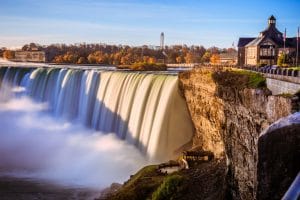 The tour takes off daily at 3:30 p.m. and is five hours of fun. First, you’ll head to
The tour takes off daily at 3:30 p.m. and is five hours of fun. First, you’ll head to 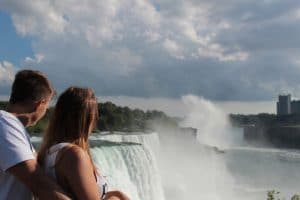 are seven fun things to do near Niagara Falls to add to your itinerary, that you might not have known about before.
are seven fun things to do near Niagara Falls to add to your itinerary, that you might not have known about before. 4. Short Hills Provincial Park
4. Short Hills Provincial Park